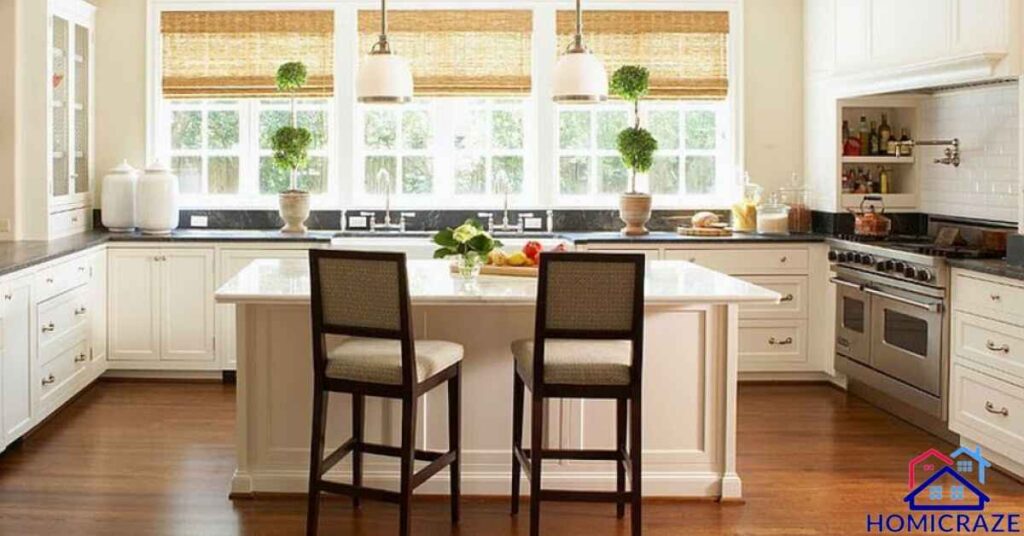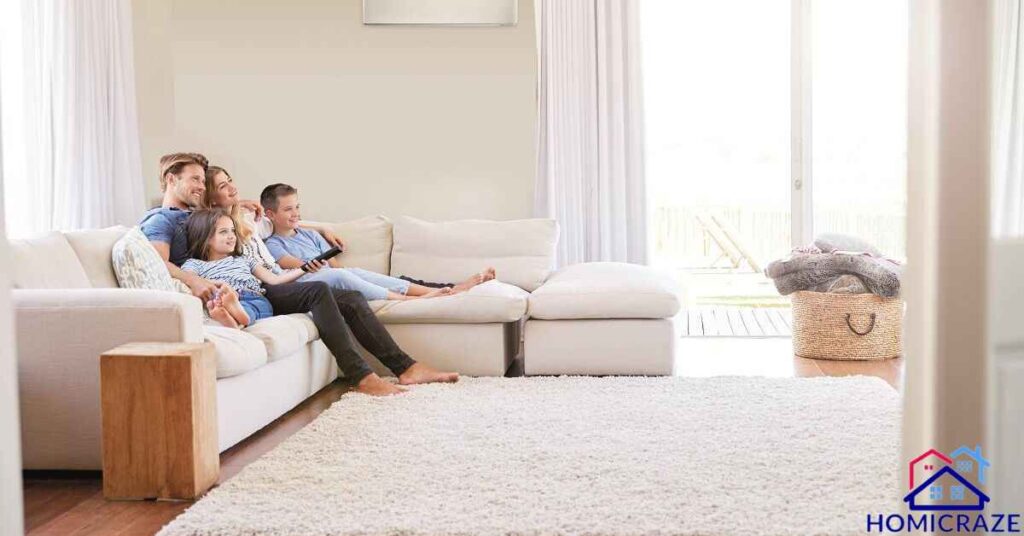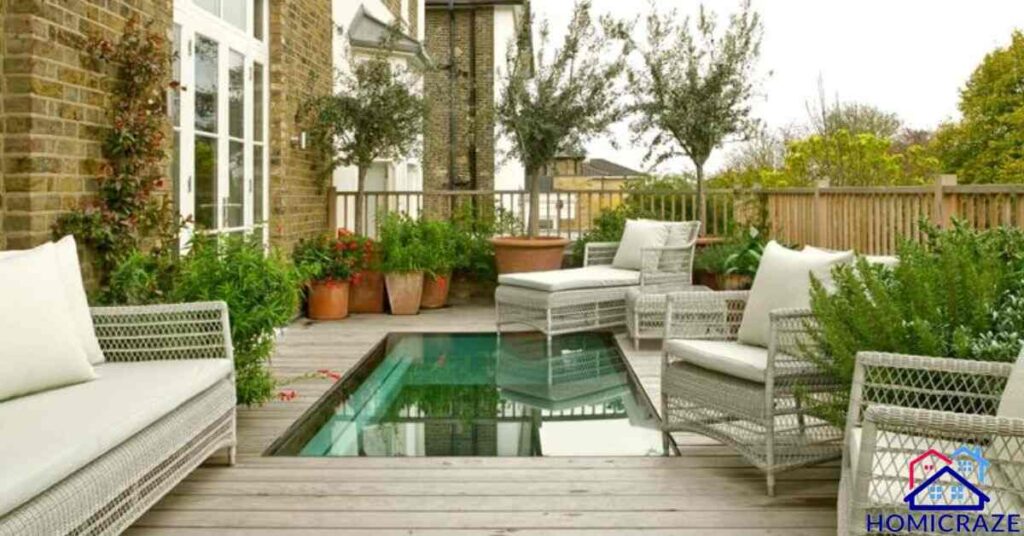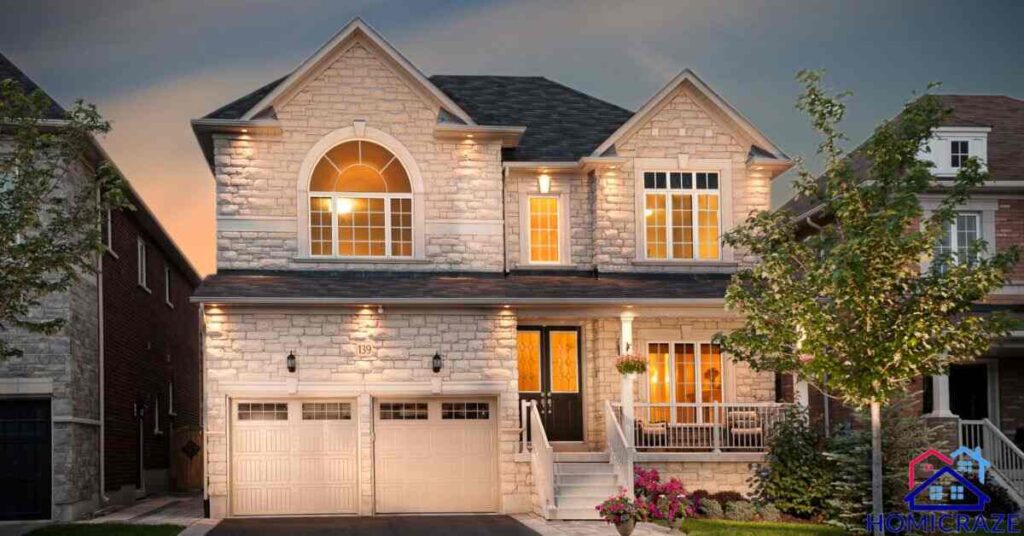This means that the heart of the home is not only a physical structure in the house. It is family orientated and comfort convey here always connect with love. It is not an easy task, and many homeowners end up having a compartmented home with the different areas of the house having no interconnectivity hence a lack of togetherness in the family.
When homes do not have a hearth or lack one it may create an uncomfortable feeling to visitors and even stress among family members. Fortunately, giving attention to what I am going to describe as ‘home’s heart’, may change your living environment for the better.
If one concentrates on the strategic design of the key place such as the kitchen, the living room area or the snug little corner, then you are likely to have a warm and spirited place that can pull in households and loved ones. With the aid of this guide, you will be able to find and grow the real essence of your home.
The Emotional Center of a House
The heart of a home is its emotional core. It’s where family members feel most comfortable and connected. This space provides stability and comfort during tough times. It’s also where happy memories are made. The heart of the home often reflects the family’s values and personality. It serves as a safe haven from the outside world.
Cultural Variations in the Heart of the Home
Different cultures have unique ideas about the heart of the home. In some Asian cultures, it might be a central courtyard. Mediterranean homes often focus on outdoor living spaces. Nordic countries emphasize cozy, warm interiors. American homes typically center on the kitchen or living room. These variations reflect cultural values, climate, and traditions.
The Kitchen: The Traditional Heart of the Home

The kitchen is often called the heart of the home. It’s where families gather to cook and eat together. The kitchen is a hub of activity throughout the day. It’s not just for meals, but for conversations and daily life. The smell of cooking food creates a warm, inviting atmosphere. Many important family discussions happen around the kitchen table.
The Evolution of Kitchen Design
Kitchen design has changed a lot over time. Old kitchens were often small and closed off. Modern kitchens are open and connected to other rooms. Islands have become popular, creating more space for cooking and socializing. Technology has improved appliances and made kitchens more efficient. Today’s kitchens are designed to be both functional and beautiful.
Family Bonding Through Cooking
Cooking together strengthens family bonds. It teaches children valuable life skills. Sharing meals encourages communication and togetherness. Cooking can be a fun, shared activity for all ages. It creates opportunities for storytelling and passing down family recipes. The process of preparing food together builds teamwork and trust among family members.
The Kitchen as a Multifunctional Space
Modern kitchens serve many purposes. They’re not just for cooking anymore. Many kitchens now include spaces for homework or working from home. Some have comfortable seating areas for relaxing. Kitchens often double as entertainment spaces for parties. They may include charging stations for devices or areas for craft projects. This multifunctional design makes the kitchen truly central to home life.
The Living Room: A Communal Heart
Living rooms are central gathering spots in many homes. They’re where families relax, talk, and spend time together. Friends often meet here for social visits. It’s a place for watching TV, playing games, or just sitting and chatting. Living rooms are versatile spaces that adapt to different activities. They often reflect the family’s interests and lifestyle.
Designing a Cozy Living Space
To create a cozy living room, focus on comfort and warmth. Use soft fabrics and plush furniture. Add layers of textures with throw pillows and blankets. Choose warm lighting options like table lamps or string lights. Arrange furniture to encourage conversation. Include personal touches like family photos or artwork. A fireplace or cozy reading nook can add extra warmth.
Technology and the Modern Living Room
Technology has changed how we use living rooms. Smart TVs and sound systems are now common. Many homes have voice-controlled devices for lighting and temperature. Wireless charging stations are often built into furniture. Some living rooms include areas for video gaming or virtual reality. However, it’s important to balance tech with spaces for face-to-face interaction.
The Living Room as a Reflection of Family Identity

Living rooms often show a family’s personality. The decor might reflect hobbies or travel experiences. Family heirlooms or artwork can tell stories about heritage. Book collections might reveal interests and passions. The choice of colors and styles says a lot about taste. Even the arrangement of furniture can show what the family values most in their time together.
The Dining Room: Nurturing Connections
Dining rooms are key spaces for family bonding. They’re where families come together for meals and conversations. These rooms often host important discussions and decision-making. They’re also places for celebrating special occasions. Regular family dinners in the dining room can improve communication. The act of sharing meals creates stronger family ties.
The Revival of Family Dinners
Family dinners are making a comeback in many homes. Regular shared meals can improve family relationships. They provide a chance to talk about the day’s events. Family dinners can help children develop better eating habits. They also teach social skills and table manners. Many families are prioritizing this time together, even with busy schedules.
Flexible Dining Spaces for Modern Homes
Modern homes often have flexible dining areas. Some use kitchen islands with seating instead of formal dining rooms. Others have convertible spaces that can be dining areas or work spaces. Eat-in kitchens are popular in smaller homes. Some families create cozy dining nooks in unused corners. These flexible solutions adapt to different family needs and home sizes.
Entertaining and the Dining Room
Dining rooms play a big role in home entertaining. They’re ideal for hosting dinner parties and holiday meals. Many people use their dining rooms for special occasions only. These rooms often have the nicest dishes and decorations. Dining rooms can be dressed up or down for different types of gatherings. They provide a dedicated space for focusing on food and conversation.
The Hearth: A Symbol of Home and Comfort
The hearth has long been a symbol of home. It provides warmth and light. Historically, families gathered around the fireplace for cooking and warmth. The hearth represented safety and togetherness. Today, even without a real fire, the idea of a hearth remains important. It’s a focal point that brings people together. Many homes still design their main living areas around a fireplace or symbolic hearth.
Modern Interpretations of the Hearth
Today’s homes often have modern versions of the hearth. Some use electric or gas fireplaces for a similar effect. Others create a central gathering spot with comfortable seating. Large TVs sometimes serve as a modern hearth, drawing family members together. Some homes use a special lighting feature as a focal point. The key is to have a central area that invites people to gather and relax.
The Psychological Impact of a Warm Center
A warm central space in a home can improve mental well-being. It creates a sense of security and comfort. People often feel more relaxed in a room with a cozy center. This can reduce stress and anxiety. A warm gathering place can also improve family relationships. It encourages people to spend time together. The presence of a hearth or similar feature can make a house feel more like a home.
Creating a Heart in Open-Plan Homes
Open-plan homes need careful design to create a heart. Use furniture arrangement to define different areas. A large rug can mark the main living space. Lighting can highlight the central area. Consider using a kitchen island as a focal point. Place comfortable seating in a way that encourages gathering. The goal is to create a clear center within the open space.
Zoning Techniques for Open Spaces
To zone open spaces, use visual dividers. Large plants or bookshelves can separate areas. Different flooring can mark distinct zones. Use area rugs to define seating areas. Lighting can create different moods in each zone. Consider using a room divider or folding screen. These techniques help create separate areas without walls.
Balancing Openness and Intimacy
Create cozy nooks within open layouts. Use furniture arrangement to make intimate seating areas. Add soft lighting for a warm atmosphere. Use curtains or screens for flexible privacy. Include some enclosed spaces, like a small study. Balance large open areas with smaller, more private spaces. This allows for both social interaction and quiet time.
The Outdoor Heart: Extending Living Spaces

Outdoor areas can become an extension of your home’s heart. Create comfortable seating areas on patios or decks. Add an outdoor kitchen or dining area. Use landscaping to create garden rooms. Consider adding a fire pit for gathering. Outdoor living spaces can be used for relaxation, entertaining, and family time. They connect the home to nature and expand living areas.
Creating Seamless Indoor-Outdoor Connections
Use large sliding or folding doors to connect inside and outside. Choose similar flooring for indoor and outdoor areas. Extend your interior color scheme to outdoor spaces. Use outdoor fabrics that complement indoor decor. Install lighting that works for both areas. Create covered outdoor areas for year-round use. These strategies make the outdoor space feel like part of the home.
Read This Blog: Frankenmuth Insurance litigation In Florid legal System
Year-Round Outdoor Hearts
Make outdoor spaces usable in all seasons. Install a patio heater or fire pit for colder months. Use weatherproof furniture and fabrics. Add a pergola or awning for shade and rain protection. Consider an outdoor fireplace for warmth and ambiance. Use potted plants that look good year-round. With the right design, outdoor spaces can be enjoyed in any weather.
The Heart of the Home in Different Housing Types

The heart of the home varies in different housing types. In apartments, it might be a combined living-dining area. Tiny homes often have a multifunctional central space. Large houses might have multiple gathering areas. The key is identifying the main space where people naturally gather. This space should be comfortable and reflect the family’s lifestyle.
Small Space Solutions
In small homes, make spaces serve multiple purposes. Use furniture that can be easily moved or transformed. Create a cozy seating area that doubles as a dining space. Use wall-mounted furniture to save floor space. Maximize vertical storage to reduce clutter. Choose light colors to make the space feel larger. The heart of a small home should be flexible and efficient.
The Heart in Multi-Generational Homes
Multi-generational homes need spaces for all ages. Create common areas that appeal to everyone. Include private spaces for each generation. Use flexible furniture that can adapt to different needs. Consider soundproofing for privacy. Create multiple seating areas within the main living space. The heart of these homes should encourage interaction while respecting individual needs.
Personalizing the Heart of Your Home
To personalize your home’s heart, consider your family’s habits. Choose decor that reflects your interests and style. Display items that have personal meaning. Arrange furniture to suit your family’s activities. Include elements that make the space comfortable for everyone. The heart of your home should feel uniquely yours and welcoming to all family members.
Incorporating Family History and Traditions
Display family heirlooms in your home’s central area. Create a gallery wall with family photos. Use traditional colors or patterns in your decor. Include objects that represent your cultural heritage. Create spaces for family rituals or traditions. The heart of your home can be a place to celebrate your family’s unique story and background.
Adapting the Heart as Family Needs Change
As families grow and change, so should the heart of the home. For new families, create safe play areas within the main living space. As children grow, include study areas or gaming spaces. Empty nesters might convert children’s rooms into new gathering areas. The key is to regularly assess and adjust your space to meet current family needs.
The Future of the Heart of the Home
Future homes may have more flexible, multi-use spaces. Smart technology will likely play a bigger role in central living areas. Homes might adapt automatically to different activities or moods. Sustainability will become more important in home design. The heart of the home will continue to be a place for connection, but with new tools and technologies.
Also Read This Blog: Homemade Mouthwash: Easy Recipes for Oral Health
Sustainable Hearts: Eco-Friendly Central Spaces
Create eco-friendly central spaces with sustainable materials. Use energy-efficient lighting and appliances. Incorporate plants for natural air purification. Choose furniture made from recycled or renewable materials. Use smart home systems to reduce energy waste. Design spaces that maximize natural light and ventilation. Sustainable hearts can be both environmentally friendly and comfortable.
Virtual Hearts in the Digital Age
Digital technology is creating new types of home gathering spaces. Virtual reality could allow distant family members to feel present. Smart displays might become central points for family communication. Digital art frames can change the look of a space instantly. However, these technologies should enhance, not replace, real-world interactions in the home’s heart.
Conclusion
The hearth is not only a house’s center for work and comfort, but also the warmth of relationships that unites you with your surroundings. This central space maybe in the kitchen or the living hall or even in a little corner, this is one of the most essential places needed in a house as it helps in building relationships between a family or friends.
Hence, through the acts of discovering and cultivating the home’s focus, one is able to achieve designing of the home and making it a home that suits one’s family’s beliefs, requirements and character.
Always bear in mind that this heart can change in accordance with the changes of the house or in accordance with the changes of the family characters or even in accordance with different lifestyles and different technologies, and to retain its function of connecting people. Ultimately, a well-cultivated heart of the home enhances your overall quality of life, providing a sanctuary where you can relax, connect, and thrive.
Frequently Asked Question
What is considered the heart of the home?
The heart of the home is often the space where family and friends gather most frequently, providing warmth, comfort, and connection.
How can I create a heart of the home in a small apartment?
Maximize communal areas with cozy furniture and meaningful decor, and use multifunctional spaces to encourage togetherness.
Is the kitchen always the heart of the home?
While the kitchen is often considered the heart, any space where loved ones regularly gather can serve that role.
How do I make my living room feel more like the heart of our home?
Add inviting seating, warm lighting, and personal touches like family photos to make the living room feel welcoming and central.
Can a home have multiple hearts?
Yes, different rooms can serve as the heart of the home for different purposes, like the kitchen for meals and the living room for relaxation.
How does the concept of the heart of the home vary across cultures?
In some cultures, the kitchen is central, while in others, communal gathering spaces like courtyards or living rooms play a key role.
What role does technology play in the modern heart of the home?
Technology facilitates connection through entertainment systems, smart appliances, and communication tools, enhancing the heart of the home.
How can I incorporate outdoor spaces into my home’s heart?
Outdoor spaces can extend the heart of the home by creating areas for relaxation, dining, and socializing in nature.
What are some ways to make the heart of the home more energy-efficient?
Use energy-efficient appliances, lighting, and proper insulation to make the central gathering areas more sustainable.
How do I balance private and communal spaces when designing the heart of my home?
Define clear zones for socializing and personal retreat, ensuring both communal areas and private spaces feel functional and balanced.







